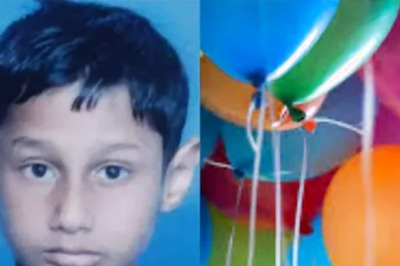Opinion | Jaishankar in Colombo: Will he be Tough on Sri Lanka for Addressing India’s China Concern?

views
With External Affairs Minister (EAM) S Jaishankar arriving in Colombo on a two-day visit to Sri Lanka on Wednesday, there is speculation and suggestion as to how tough will India be vis-à-vis the island nation addressing New Delhi’s concerns, especially on the China front. One suggestion is for New Delhi to talk tough on restructuring the debts that Sri Lanka owes to India and China, to enable Colombo to obtain the pending $2.9-b IMF credit, which in turn can be the basis for an additional $5 b from the World Bank and ADB.
As coincidence would have it, Jaishankar’s Colombo visit comes back-to-back after one by a Chinese ministerial delegation, whose main task was to discuss restructuring or rescheduling of Beijing’s massive loans to Sri Lanka on what is generally seen as ‘white elephant’ projects, as difference from a debt-trap, as earlier argued to be. That is because they are not ghost projects but actually exist only because the economic usage and returns from there are not commensurate with the repayment of loans at above rates that are above the prevailing international rates, especially between governments that make repayment a burden on the Sri Lankan state.
In contrast, the bulk of India’s credit to Sri Lanka amounting to $4 billion, came through last year, when the southern neighbour was facing an unprecedented economic crisis, caused by the China-funded ‘white elephant’ projects. It’s true that the debtor, more than the creditor, should have done due diligence while seeking those credits, but there is no denying that the creditor, if he is serious about receiving back his money, should have done it too — and evaluated the repayment capacity of the debtor, if not the latter’s real requirements.
Despite claims by China-friendly politicians in Colombo that the nation’s China debt was only 10 per cent of the total, and the bulk of it was to international financial institutions, within the category of state creditors, China still tops the list. India with its fresh loans last year for helping Sri Lanka to fend off one crisis after another, still remains a distant second, whereas China’s recovery loans of the kind were abysmal, and so were those from third nations, including many from the affluent West.
Easier said than done
It is this that has reinvigorated Indian analysts’ suggestion that New Delhi should either hold Sri Lanka accountable for its China relations, which in turn is ‘anti-India’ in substance without saying so, or at least look the other way when Sri Lanka approaches India for restructuring its pending loans, and seek more loans for stabilising and reviving the nation’s economy.
It is easier said than done. First and foremost, it makes little business sense, even for a nation-state, to walk away from another when there is a huge debt by the other, without finding a way out, for them to be able to repay it all, one way or the other, if only over time. Given India’s unhidden political aspirations, if it refused to yield on restructuring, what other options does it have for getting back the debt money with the low costs that will accumulate over time.
Certain sections within and outside the government may have considered delaying, if not denying, Sri Lanka debt-restructuring, independent of what China may do in this case. Clearly, the two are not on par, and India cannot be seen as positioning itself as competing with China for the title of the ‘global Shylock’, from Shakespeare’s ‘Merchant of Venice’.
If India has to compete with China on the aid front, it can only convert the relative economic weakness into moral strength. There is no global or regional competition for the latter. It was also what Nehruvian foreign policy, or non-alignment, was all about.
Just now, India has returned to those old days, where its passivity in the regional and global arenas has been replaced with a tough-talking image, which still projects only its moral strength. Rather, the government of Prime Minister Narendra Modi has packaged it differently, to go with India’s relative strengths — economic, political and strategic — in the regional and global arena.
Imponderable fallouts
In the post-Cold War era, unlike earlier, India’s historic adversity with China has made it a natural ally of the US-led West, where historic cross-Atlantic differences were beginning to show up, which the Ukraine War has pushed to the background. All this has made India’s geographical location and geo-strategic asset vis-à-vis China, and also has lent strength to India’s thinking and vocal cord. The Quad and the India-Pacific are both product and contributing factors, alternatively and at the same time.
At a time when the Ukraine War has hit the post-Covid global economic recovery hard, it has made things even more difficult for Third World countries, or the Global South. India has swiftly risen to the occasion, out of genuine good humaneness, which is the core of ‘Indianness’, by whatever name called. Prime Minister Narendra Modi began with ‘Neighbourhood First’.
Modi, and India, hence, have since expanded India’s vision to reach out to ‘Vasudeva Kudumbagam’ in Sanskrit and ‘Yaadhum Oore, Yavarum Kelir’ in Tamil, both meaning one and the same thing: ‘The world is one family’. New Delhi has since re-fixed its focus on the Global South, which is still facing the imponderable fallouts of both the pandemic and the Ukraine War.
In the past weeks, after formally taking over the leadership of G-20, India has narrowed its vision to the Global South, but within the ambit of the former’s accepted agenda. New Delhi has also indicated in between how organisations like the G-20 are becoming the collective voice of the world as the UN is losing out in the absence of substantial reforms that are timely, too.
That the G-20 has other dimensions not outlined in the founding charter, and that India too has better traction in relating to what is considered as the ‘rich men’s grouping’ outside of G-7 but from the poor men’s perspective, both became clear, recently. Addressing the India-organised ‘Voice of the Global South’ virtual summit, Sri Lankan President Ranil Wickremesinghe made this much clear: India is best-placed to talk to the rich about poor countries’ indebtedness, and act as a bridge between the developing countries, which are facing a debt crisis, and the G-20. It was a unique summit with 125 nations participating and was organised as a part of India’s presidency of the G-20, to identify and address issues of a larger concern for the world.
Large, large-hearted
In this background, India cannot be seen as being harsh in its immediate surroundings when they (all) need a larger and large-hearted neighbour more than ever. In a way, India’s unstinted and unqualified support for Sri Lanka even as the economic and forex crises were unfolding in various avatars, on various fronts, coupled with the often-unsought assistance in medicines and other material at the height of the pandemic has fitted well and bolstered its post-Independence self-righteousness, for which there were many takers, inside the country and outside.
Does it all mean that the Modi-era foreign and neighbourhood policy should suffer from what critics dub as Nehruvian innocence or naivety – or worse still, ignorance and/or stupidity? How India mixes and matches the imagery from recent times with the immediate concerns of ‘supreme national self-interest’, as the Americans used to put it, will help build the nation’s image, going beyond the present-day self-image.
This will require that image-building begins at home, or nearer home, even if one were uncharitable and too academic and theoretical to miss out on the ‘Indian heart’, and reduce it to a PR exercise and nothing more. The reality of the situation is that India cannot also afford to have unsettled and disturbed neighbours and neighbourhoods, if it has to reach out to the global stage, where it is already more than at any time in the past — and has to move on to the centre-stage and remain there, for long.
This implies that the Jaishankar visit should balance India’s emerging global image with self-interest, and prove that it is also in Sri Lanka’s own self-interest. For this to happen, New Delhi has to think beyond the American and Chinese way of ‘managing the leaderships’ of nations, as did the Soviet Union in its times. It should evince a genuine interest in the collective growth of the two nations and its people — and as a regional metaphor, as they are all watching it, too.
Suffice is to point out that the much-delayed Trincomalee development project, whose progress has been stalled for long, if taken forward during EAM Jaishankar’s visit, would go a long way in bolstering bilateral ties and also economic cooperation — unlike the China-funded Colombo Port City (CPC) financial-hub, into which Saudis have now committed to invest — possibly leaving little space for domestic interests and business to grow alongside.
Writing on the wall
At the same time, India needs to be alive to the pitfalls of its desires and aspirations — not, ambitions, as is being often misunderstood, across the Palk Strait. For instance, when President Ranil Wickremesinghe initiated the process for the ‘full implementation of the India-facilitated political solution to the Tamil-centric ethnic problem’ of the past decades through the 13th Amendment to the Sri Lankan Constitution, the already-weakened Tamil moderate recipients and more divided than any time before now — thanks, only to their own inherent follies and foibles. Clearly, someone in New Delhi refused to read the writing on the wall.
Likewise, India needs to be aware of the negative fallouts, if any, of the proposed revival of the ferry service between the two nations, rather the Tamil-speaking regions of the two nations — connecting Kankesanthurai (KKS) in Sri Lanka’s Northern Province and the Karaikal enclave of the Union Territory of Puducherry. Definitely, the comparable ticket rates ($120 against $6)) and the free luggage allowance (100 kg against 20) will make it attractive for Sri Lanka’s traders, who may source their products from the southern Tamil Nadu cities of Madurai and Trichy, as against the state capital of Chennai, if only over time.
But there are also increasing requests from Jaffna traders especially to help them use the ferry’s return trip to market their products directly in Tamil Nadu and the rest of South India, without having to route their exports and imports through Colombo — with which they already have an ethnic-centric mental-block. There are multiple consequences falling out of it, and these could wreck the ferry service from the Colombo side the same way it had sabotaged the bilateral CEPA agreement after the two governments had initialled the MoU and stalled the alternative ETCA negotiations, the latter mostly during the Modi prime ministership. This is not to leave out the ‘security concerns’, real and imaginary, which the Indian and Sri Lankan agencies could begin flagging after a time, if not already.
The writer is a Chennai-based policy analyst & political commentator. Views expressed are personal.
Read all the Latest Opinions here




















Comments
0 comment